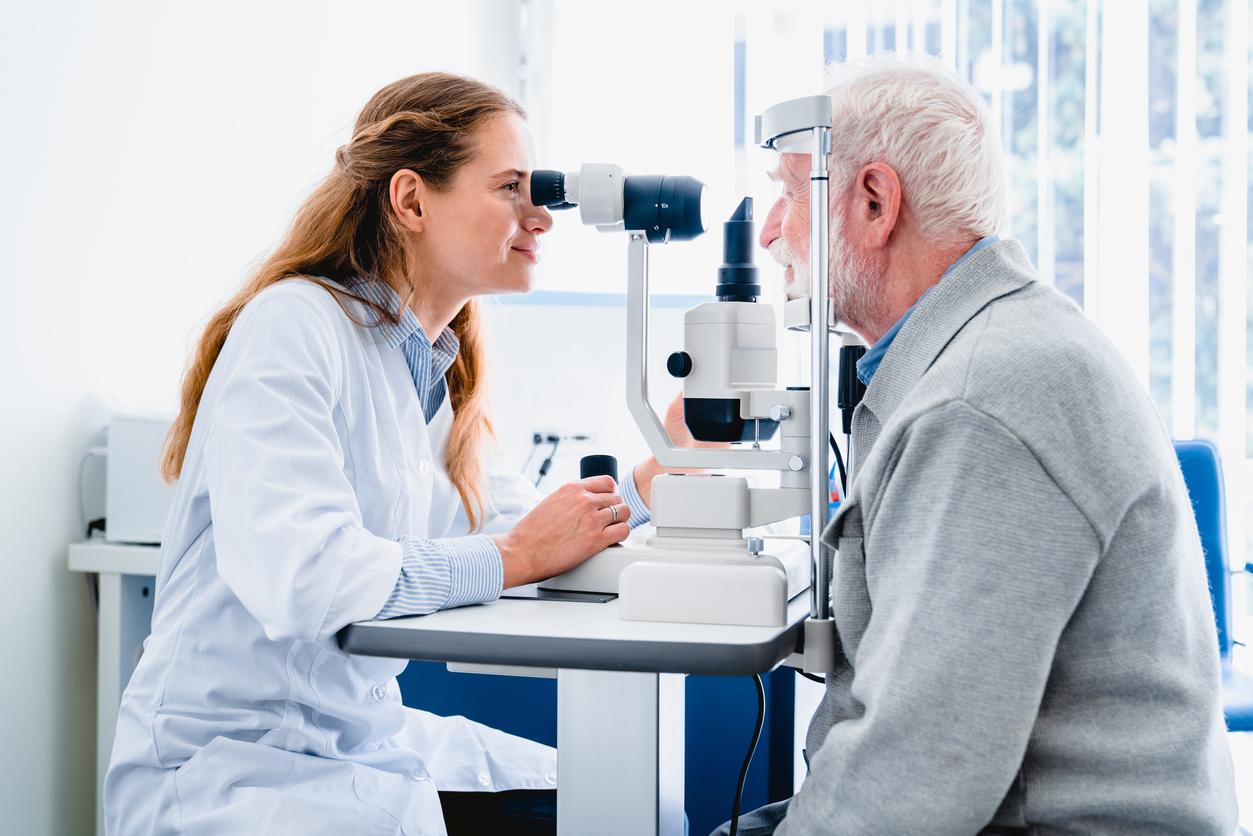Preserving your vision is essential, whether you are a senior citizen or a teenager. Unfortunately, many different conditions can impact your ability to see at any stage of life, including glaucoma. A glaucoma diagnosis is a critical step in preventing major vision loss. What is glaucoma, and do you have any of the symptoms? Read on and learn how to prevent and treat this eye disease.
What Is Glaucoma?
Glaucoma is a term used to refer to a few diseases that target the eye and the optic nerve. Over time, as glaucoma symptoms worsen, you can develop severe vision loss that can lead to total blindness. Across the United States, approximately 3 million people have received a glaucoma diagnosis. Throughout the globe, it is the second most common cause of blindness.
There are several types of glaucoma, which is why visiting with a doctor for an accurate diagnosis is so critical. The most common type of glaucoma is known as open-angle glaucoma, and it has very few symptoms in the early stages. While there has never been a cure discovered for glaucoma, there are numerous ways to manage the condition, including surgery and eye drops.
What Are the Symptoms of Glaucoma?
Every type of glaucoma has different symptoms that can be experienced throughout the progression of the disease. The symptoms that you might experience could be very different from the symptoms of someone with another variety. Some of the most common symptoms that lead to a glaucoma diagnosis include:
- Patchy blind spots in your peripheral vision
- Trouble seeing things clearly in the middle of your central vision
- Eye pain
- Nausea
- Headaches
- Blurry vision
- Redness or itchiness of the eyes
- Seeing colored rings or halos around lights during the day or at night
- Blurred vision after exercising
- Loss of peripheral vision
While glaucoma is most common in older patients, it can also be diagnosed in infants and children. Some of the indicators that your child might be dealing with this eye disease include the following:
- Cloudy eyes
- Tears without crying
- Blurry vision
- Severe nearsightedness that is progressing and worsening rapidly
- Headaches
- Excessive blinking
Who Is at Risk for a Glaucoma Diagnosis?
Anyone can receive a glaucoma diagnosis at any age, but some risk and demographic factors make you more likely to experience symptoms. Some of these risk factors include:
- Age (over 60 years old)
- Eye pressure
- Race or ethnicity (African and Hispanic populations have increased rates of glaucoma)
- Family history, particularly if your siblings or parents have received a glaucoma diagnosis
- Corneal thickness
- Myopia or nearsightedness
- Diabetes (type 1 or type 2)
- Low blood pressure
- Taking medications like Prednisone and other steroids
- Excessively consuming over-the-counter cold and flu medication
- Injuries to the eyes
Properly managing the risk factors above can decrease your risk of needing surgery or eye drops, but in some cases, it cannot be prevented entirely. Many times, there is no way to prevent glaucoma.
How Can You Treat Glaucoma Symptoms?
Unfortunately, no treatment for glaucoma can restore any vision loss. However, you can mitigate additional vision loss and ensure that there are no further serious health consequences. Some of the most common types of glaucoma treatment include:
- Glaucoma eye drops, which are prescribed by your doctor and are used to decrease eye pressure and lower the chances of damage to your optic nerve.
- Glaucoma surgery, which can include a variety of different surgical techniques to drain fluid from the eye.
- Oral medications like carbonic anhydrase inhibitors or beta-blockers.
- Minimally invasive glaucoma surgeries (MIGS) that can lower small amounts of pressure without invasive surgery.
- Glaucoma laser treatment, which is another method to decrease the fluid accumulated in the eye.
The most important factors when treating glaucoma symptoms are your adherence to the instructions from your doctor. If you are prescribed glaucoma eye drops but do not take them consistently or as your doctor prescribes them, it will be very hard for your eyesight to improve.
Additionally, if you have glaucoma surgery but do not follow the aftercare instructions, chances are your results will not be satisfactory, and you might need to have additional surgical procedures in the future.
When Should You See a Doctor?
The most common type of glaucoma has no symptoms until it has progressed to the halfway point. This makes it more difficult to decipher whether you should visit a healthcare provider. Other than having your annual preventative eye exam at an ophthalmologist, you should also see your doctor if any of the symptoms above appear suddenly or worsen rapidly.
If you start to notice the most severe symptoms, like agonizing eye pain or very serious headaches, you may need to seek emergency treatment to regulate the pressure in your eyes and avoid total vision loss.
How Is It Diagnosed?
The tests used to diagnose eye conditions are very fast and painless. In most cases, your ophthalmologist dilates your eyes to see your optic nerve better. Once they can see the optic nerve, they will check for signs of the condition, take photographs to track any future changes and look for anything else that might be irregular.
Depending on where in the disease progression your doctor believes you are, they may also perform an eye pressure test or a traditional visual field test to determine whether or not you are losing some of your peripheral vision. Some specialized tests might also be ordered to confirm your diagnosis.
How to Prevent and Live With This Condition
Because there is a hereditary component, there is only so much that you can do to avoid a diagnosis. However, there are numerous ways that you can live a healthy and fulfilling life with vision loss. Some of the best ways to keep your eyes healthy include:
- Eating a healthy and balanced diet
- Exercising regularly
- Taking any eye drops or medications that are prescribed to you
- Regularly visiting the eye doctor and updating your glasses prescription
- Avoiding smoking and excessive alcohol consumption
- Using a wedge pillow to sleep
- Limiting the amount of caffeine that you consume
- Avoiding rubbing your eyes
- Wearing protective goggles any time you are playing sports, doing yard work, or performing any other activities that could damage the eye
Your doctor can answer any questions about your diagnosis and provide personalized advice on how to modify your lifestyle best.
Get an Accurate Eye Disease Diagnosis from TopLine MD Alliance affiliated Physicians
Whether you are concerned that your child might be experiencing vision loss or noticing changes to your own eyesight that you are concerned about, making an appointment with your doctor and an ophthalmologist should be easy. It can be scary to deal with an unknown vision problem, so getting an accurate diagnosis is essential. At TopLine MD Alliance it’s simple to get the health services that you need.
If you are interested in scheduling an appointment with a doctor or an ophthalmologist, use the convenient Find a Provider button above. This customized tool will allow you to find someone near you to meet your needs today. Every TopLine MD provider is caring and compassionate, and will work quickly to help get you the treatment plan you need to preserve your eyesight.
The TopLine MD Alliance is an association of independent physicians and medical practice groups who are committed to providing a higher standard of healthcare services. The members of the TopLine MD Alliance have no legal or financial relationship with one another. The TopLine MD Alliance brand has no formal corporate, financial or legal ties to any of the affiliated physicians or practice groups.




